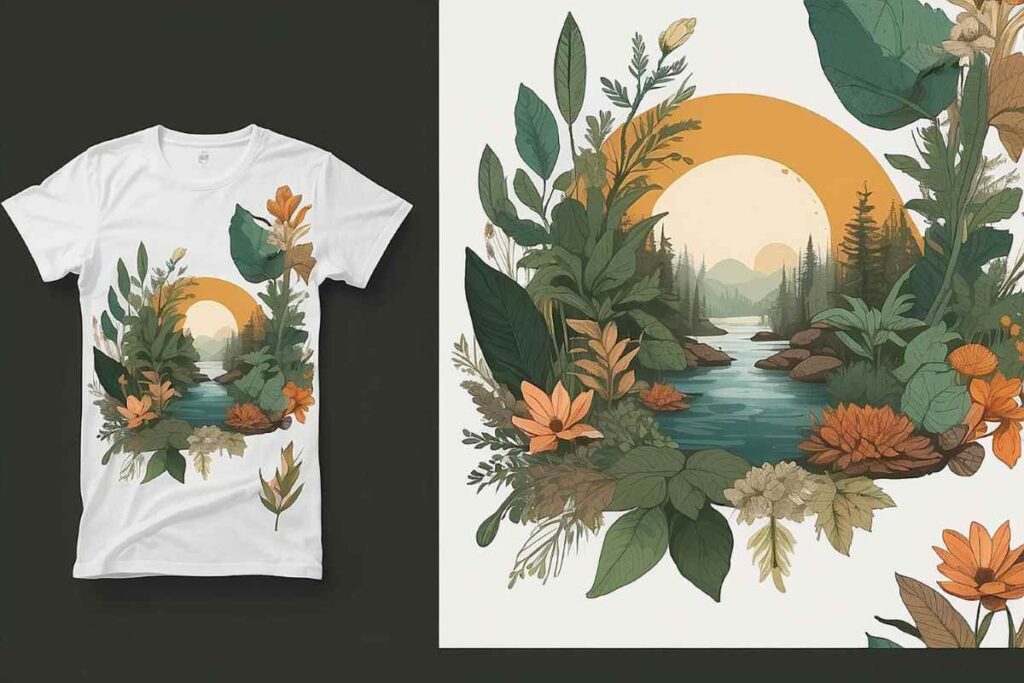DTF Transfers, or Direct to Film Transfers, have revolutionized the way custom apparel printing is approached, offering an innovative alternative to traditional printing methods like screen printing and direct to garment printing. This method stands out for its ability to produce vibrant, high-detail designs and is particularly appealing to businesses seeking flexibility in their product offerings. Unlike traditional methods that can be limited by setup costs and design complexity, DTF allows for cost-effective short runs, making it ideal for those looking to explore unique or intricate designs. Furthermore, with its compatibility across various fabric types, DTF Transfers are paving the way for modern printing techniques in the competitive apparel market. In this guide, we will delve deeper into the advantages and limitations of DTF in comparison to its more traditional counterparts, enabling you to make an informed decision for your printing needs.
When exploring printing options for your clothing or promotional items, understanding the nuances of DTF Transfers becomes essential. Also known as Direct to Film Transfers, this method utilizes advanced technology to transfer colorful and detailed designs onto fabrics seamlessly. It offers a refreshing alternative alongside established traditional techniques such as screen printing and direct-to-garment processes. In our analysis, we will unpack the benefits of using DTF compared to conventional printing methods while addressing considerations—like order size, design complexity, and material versatility—that can guide your decision-making process effectively. With a closer look at these printing techniques, you can align your production choices with your creative vision and business goals.
What Are DTF Transfers and Their Benefits?
DTF Transfers, or Direct to Film Transfers, represents a cutting-edge advance in garment printing technology, attracting significant attention for its unique advantages. Unlike conventional methods such as screen printing, which relies on layering inks directly onto fabric, DTF employs a specialized film onto which designs are printed using high-quality inks. This method not only allows for vibrant outputs and intricate designs but also adapts effectively to various fabric types, making it a versatile choice for custom apparel printing.
One of the most appealing benefits of DTF Transfers is their cost-effectiveness for small production runs. Since there’s no need for elaborate setup processes like those found in traditional screen printing, businesses can optimize their budgets while maintaining high quality. Furthermore, DTF Transfers enable rapid turnaround times, making them an excellent option for on-demand printing or personalized items, thus keeping pace with fast-moving consumer trends.
Frequently Asked Questions
What are DTF Transfers and how do they compare to traditional printing methods?
DTF Transfers, or Direct to Film Transfers, are a modern printing technology that allows for the application of intricate designs onto various fabrics. Compared to traditional printing methods like Screen Printing, DTF offers high detail and vibrant colors, making it suitable for complex graphics. However, traditional methods are known for their durability and cost-effectiveness in larger runs.
Are DTF Transfers more cost-effective than Screen Printing for small orders?
Yes, DTF Transfers are often more cost-effective than Screen Printing for small orders. Unlike Screen Printing, which has higher setup costs, DTF allows for lower initial investments, making it ideal for custom apparel printing with fewer items.
How do DTF Transfers perform in terms of durability compared to traditional printing methods?
While DTF Transfers provide excellent detail and color fidelity, their durability may not match that of traditional printing methods like Screen Printing. Screen Printed designs tend to be more resistant to wear and tear, especially with repeated washing, due to the thicker inks used.
Can DTF Transfers be used on a variety of fabrics compared to Direct to Garment (DTG) printing?
Yes, DTF Transfers can be applied to a wide range of fabrics, including cotton, polyester, and blends. This versatility often outweighs that of Direct to Garment (DTG) printing, which primarily works best on 100% cotton fabrics.
What are the key advantages of using DTF Transfers over traditional printing techniques?
The main advantages of DTF Transfers include their ability to produce high-detail images with vibrant color gradients, versatility across different materials, and lower setup costs for smaller runs. These benefits make DTF an appealing choice for custom apparel printing.
How does the turnaround time for DTF Transfers compare to traditional printing methods?
DTF Transfers generally offer faster turnaround times, particularly for on-demand printing or custom orders. In contrast, traditional methods like Screen Printing can require longer preparation times due to setup processes.
| Method | Advantages | Limitations | Best For |
|---|---|---|---|
| DTF Transfers | High detail and color fidelity, versatile for materials, cost-effective for small runs | Durability concerns, higher initial setup costs | Small to medium orders with complex designs |
| Traditional Printing | Durability, cost-effective for large orders, established techniques | Setup costs and time, limited color options for complex designs | Large volume orders, simple designs |
Summary
DTF Transfers are revolutionizing the garment printing industry, offering vibrant colors and flexibility that appeal to businesses looking for high-quality prints. With the ability to produce detailed designs cost-effectively for smaller runs, DTF methods stand out as a modern solution to traditional printing challenges. However, businesses must weigh the advantages of DTF, such as versatility and detail, against traditional methods that offer superior durability and cost savings for larger orders. Overall, understanding the unique benefits and limitations of both methods is crucial in selecting the best printing technique to meet your specific needs.


